Canon EOS R6 review
Canon’s full-frame mirrorless line finally packs a strong punch

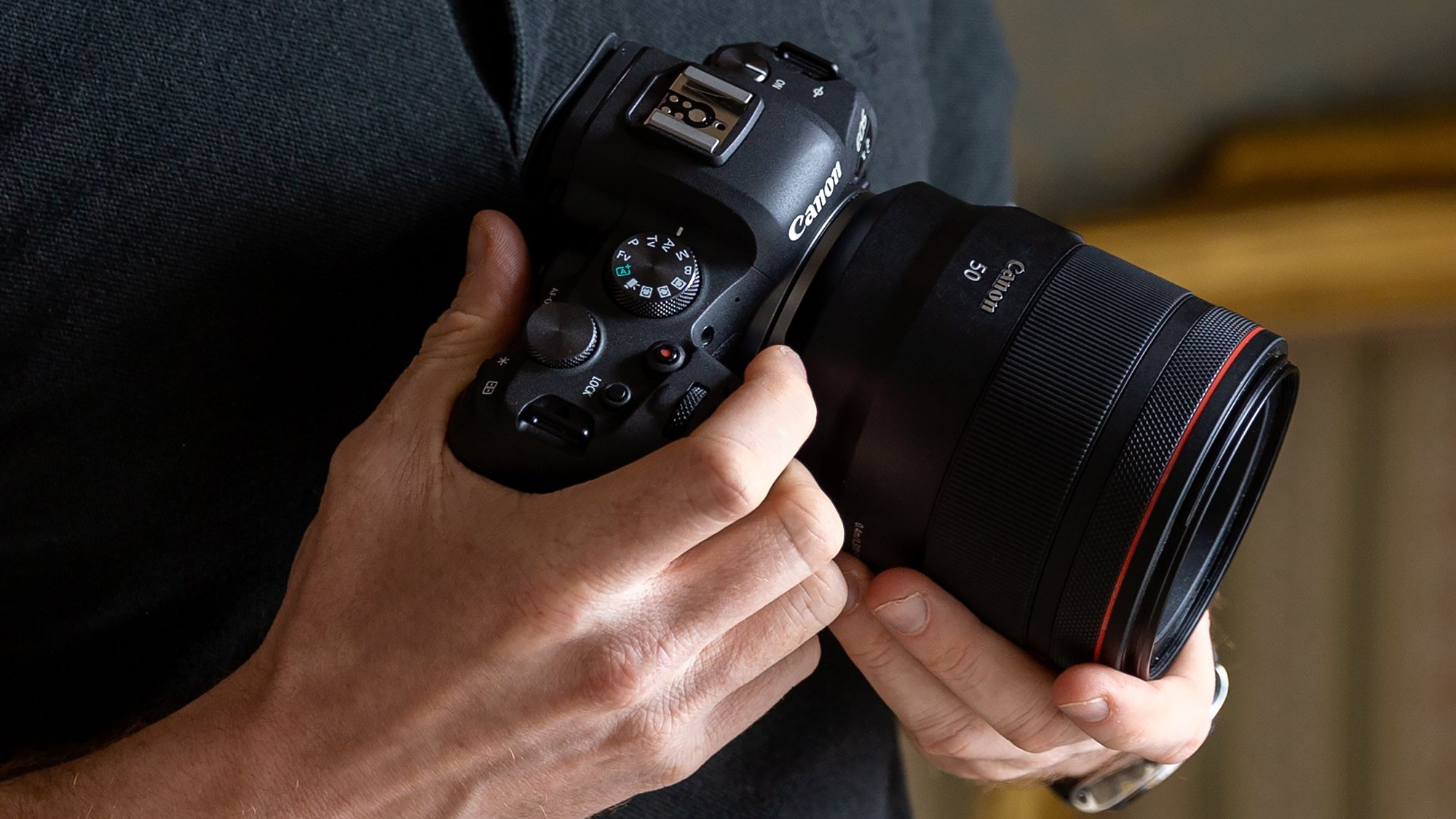
The Canon EOS R6 is one of a duo of full-frame mirrorless cameras from the big-name in photography. It represents a coming-of-age for the EOS R system and shows off what this heritage company really is capable of when it puts its mind to it. You get great image quality, superb autofocusing and fast frame rates. It offers a lot of best-in-class capabilities, but there are some 4K video issues, plus it’s quite pricey right now.
-
+
Superb autofocusing
-
+
Great all-rounder
-
+
Fast shooting
-
-
4K video overheating issues
-
-
Fairly low resolution
-
-
Pricey
Why you can trust T3
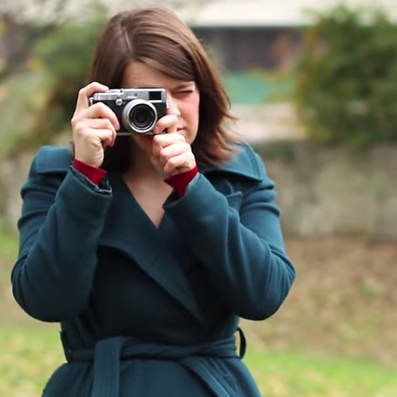
Announced at the same time as its more expensive sibling, the Canon EOS R6 is aimed squarely at the advanced enthusiast. You could easily compare it to the Canon EOS 6D DSLR, where the Canon EOS R5 is the 5D Mark IV equivalent.
In essence, what we have here is an R5 light, giving you much of the benefits of the more expensive system, but in a more affordable, easier to obtain body. Of course, to get that, there are some sacrifices to be made - some of which may not be too much of a bother, depending on the type of user you are.
To distil the specs down to just a couple of sentences - you get a 20.1-megapixel full-frame sensor, Dual Pixel CMOS autofocusing, in-body image stabilisation (IBIS), 4K video shooting (with some limitations), impressive tracking focus capabilities and up to 20fps burst shooting.
The price of the EOS R6 puts it in a little bit of a middle-ground between more expensive high-end cameras, such as the Nikon Z7 and the Sony A7R IV, and cheaper, more entry-level models, such as the Nikon Z6 or the Sony A7 III.
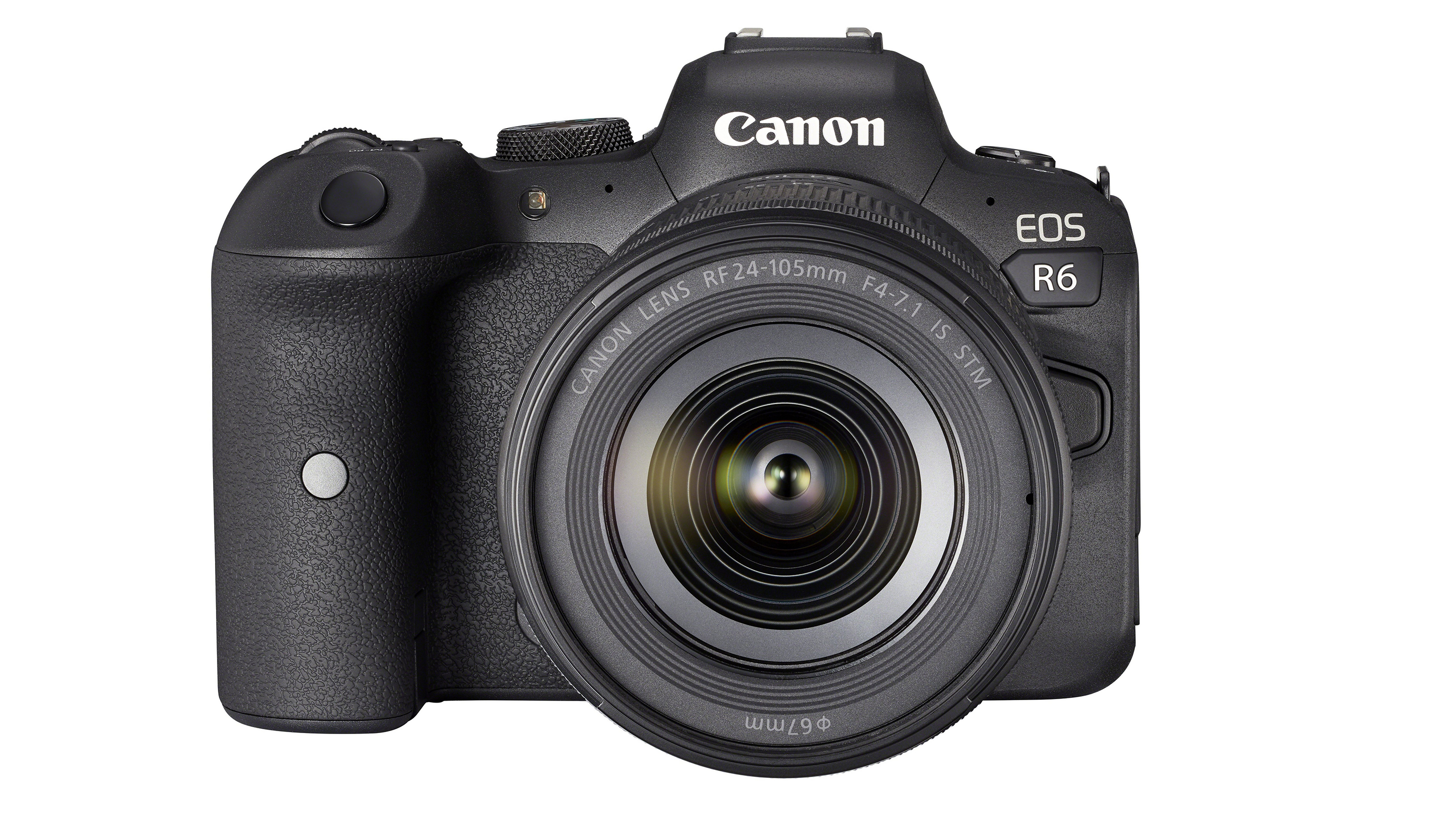
Canon EOS R6 Review: Design and Handling
The R6 very much has a classic “Canon” feel about it, so if you’re coming to mirrorless for the first time after using one of the heritage brand’s DSLRs, you’ll certainly feel at home here. In fact, it’s roughly the same size as one of Canon’s mid-range models, such as the APS-C Canon EOS 90D, but with the bonus of a full-frame sensor and smaller accompanying lenses than a DSLR.
A chunky grip feels comfortable and satisfying to hold, and although it’s not the lightest camera on the market, it’s still one that most users could work with all day and still not feel too fatigued by it.
The vast majority of dials and buttons are found on the right-hand side of the camera, making most of them easy to reach with your thumb. The exception to this is the on/off dial which is found on the left-hand side of the camera, along with the “rate” and main menu buttons. Since these are buttons you aren’t likely to use very frequently, it makes sense to put them over here out of the way.
Otherwise, it’s a fairly self-explanatory set-up, especially if you’ve used a Canon camera before. There are dual control dials, which you can use to control aperture and/or shutter speed, depending on the shooting mode you’re in.
On the back of the camera, you’ve got a Q button that you can press to access a range of commonly used settings, such as AF type, white balance, and so on. There’s also a joystick that you can use to move the AF point across the screen, or to navigate through both the main and quick menu.
A fully-articulating 1.62-million dot, 3-inch screen is useful for shooting from all manner of angles, as well as being helpful for capturing selfies and recording videos of yourself. It’s joined by a viewfinder, which although not as impressive as the ultra high-resolution device found on the more expensive R5, is still perfectly serviceable at 3.69-million dots.
Dual card slots are found on the right-hand side of the camera. Both are SD, and both are the fast UHS-II type compatible. This makes a lot of sense for enthusiasts who are likely to have a stack of SD cards at the ready, rather than the less common / more professionally specced CFExpress card, as found in the R5.
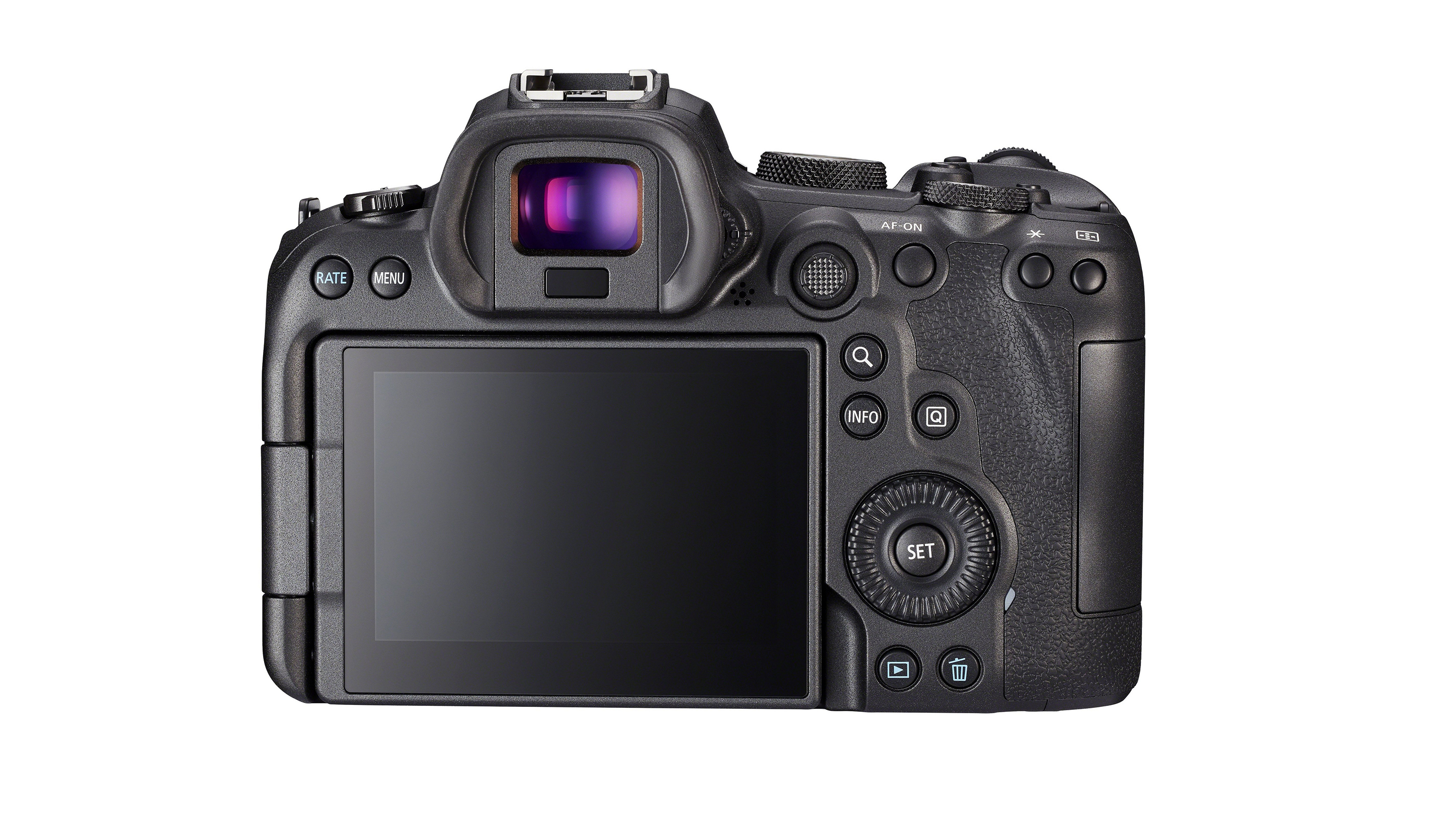
Canon EOS R6 Review: Features
The Canon R6’s full-frame sensor has 20.1 megapixels, which although plenty for most ordinary situations, perhaps feels a little on the “low” side. It gives you less scope for cropping after the fact, but it does help with keeping file sizes manageable. Of course, it also helps to keep the price lower than the R5.
Canon now has three different lens mounts in circulation, which can be a little confusing. As an R camera, it uses the full-frame R mount, but if you do have any EF lenses in your collection, you can use them via an adapter, which works very well. You can’t switch your lenses between Canon’s APS-C mirrorless range though (EF-M), which is a little bit annoying for upgraders.
This model can be bought with a 24-105mm f/4 - f/7.1 “kit” lens. This is a decent enough lens to get you started with and works well as a walk around optic thanks to its good focal length range, but there are certainly sharper and more impressive lenses out there.
Autofocus specifications are particularly alluring with the R5. It uses an on-sensor Dual-Pixel CMOS AF II focusing, which gives you 6,072 AF points to choose from - the vast majority of the frame is covered. Eye AF is included for both humans and animals (dogs, cats and birds).
If you shoot moving subjects, then the R6 also has some very enticing specifications. There’s up to 20fps shooting, or 12fps if you need to use the mechanical shutter. Another useful spec is inbuilt image stabilisation, which offers up to 8 stops advantage - making it best in class.
Vloggers/videographers will be keen to know what the R6 can offer in terms of performance. Here it really is a pared-back version of the R5. You get 4K video, but it’s UHD, with no DCI support. On the plus side, you can use the whole of the sensor, unlike some other Canon models, so you get uncropped footage. You may have heard about the issues with overheating that the camera has - this seems to appear if you shoot 4K for longer than 30 minutes, which could be problematic for some videographers, but for the average user capturing short clips is less of an issue.
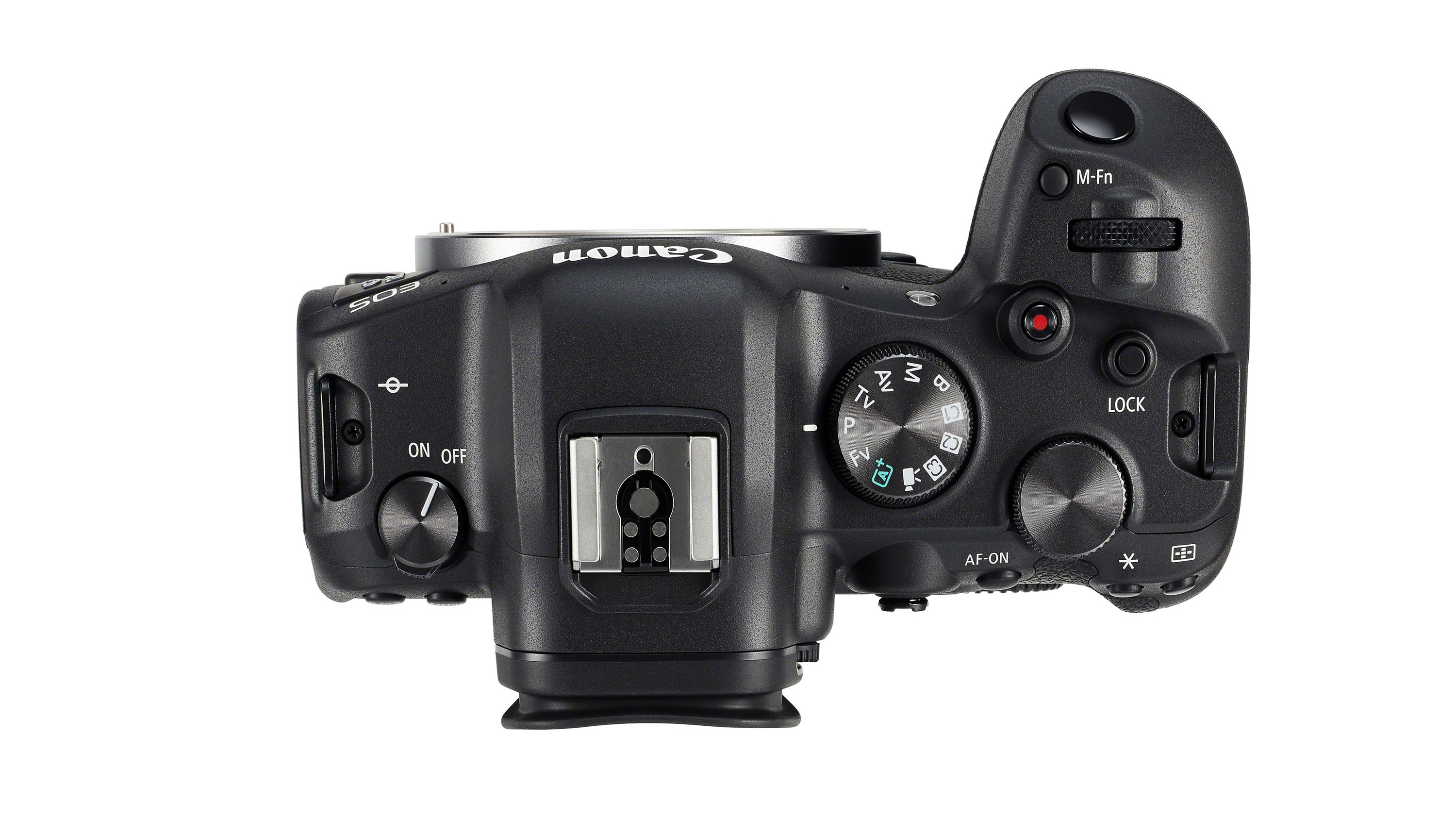
Canon EOS R6 Review: Performance
The R6 promises a lot with its impressive range of specifications. The good news is that for the most part, it delivers extremely well.
Let’s start with image quality - the camera is capable of producing lovely, warm and well-saturated colours that stay on the right side of accuracy without losing vibrance in most situations. On the whole, all-purpose metering gets exposures more fairly accurate, but it can be fooled in high-contrast situations, since Canon prioritises the active AF point.
Despite having a relatively low-resolution sensor by modern standards, you shouldn’t feel disappointed with how well detail is rendered, with an overall fantastic impression when looking at images at normal printing and web sizes. You can see some image smoothing if you zoom in at 100% in images taken at high ISOs, but otherwise, images remain impressively sharp.
Speaking of high ISOs, the R6 puts in a great low-light performance, leaving you with usable images even at very high sensitivity settings such as ISO 20000. For the best results, it’s ideal if you stick to ISO 12800 and below, though.
We wouldn’t expect anything less than fantastic image quality from a Canon camera, but perhaps what impresses us the most about the R6 is its performance in other areas. Autofocusing is nothing short of fantastic, with particular special mention going to its tracking prowess when photographing animals. Eye AF is capable of picking out animal eyes, even when they’re fairly difficult to be seen with a human eye - such as dark eyes surrounded by black fur. It locks on to the target and follows it around the frame, shooting at fast frame rates and producing hit after hit. For that reason, it’s ideal for wildlife and action shooters who want something they can really rely on.
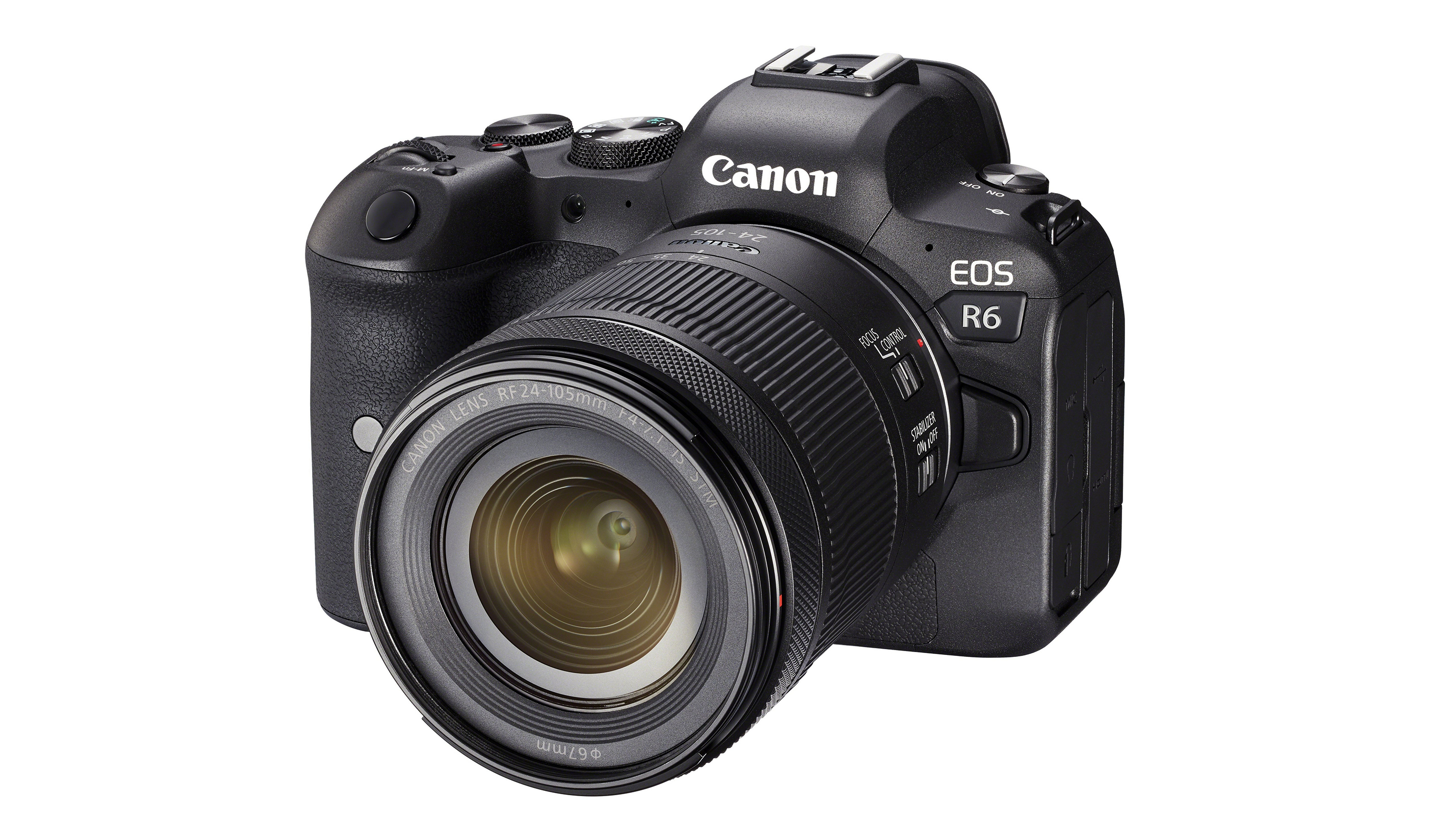
Canon EOS R6 Review: Verdict
There’s a lot to like about the Canon EOS R6, and it’s great to see Canon really getting itself into gear when it comes to full-frame mirrorless options. After a little bit of a lacklustre start with the Canon EOS R, it feels like the system has finally come into its own with the R5 and the R6.
It produces great images, and is extremely impressive when it comes to fast frame rates, super quick autofocusing and Eye AF. The hit rate for wildlife/animal photography is fantastic, and it would certainly make sense for those who often photograph this kind of subject to invest in an R5.
Of course, as with anything, there are some drawbacks to consider. This is undeniably a great camera, but mostly for stills photographers. If you’re into videography, the R5 is a much better option - particularly due to the overheating issues with shooting extended 4K video clips.
There’s also the fact that by some modern standards, the R6 is fairly low resolution. Although 20.1 megapixels should be enough for most ordinary situations, you might be put off by not being able to crop tightly after the fact.
The biggest drawback, as it stands, is the price. The EOS R6 may be cheaper than the R5, but it’s more expensive than some other models on the market - but generally, you do get what you pay for.m
Overall, the EOS R6 is a fantastic camera and it’s well worth a look, particularly if you’re looking for something particularly adept for fast shooting.
Liked this?
Sign up to the T3 newsletter for smarter living straight to your inbox
Get all the latest news, reviews, deals and buying guides on gorgeous tech, home and active products from the T3 experts
Amy Davies is a freelance journalist that covers cameras for T3 and many other sites. She is also Features Editor at Amateur Photographer magazine and, when she's not writing about cameras, she's probably taking pictures of her cute dog.
-
 This is the sound of BMW's upcoming Neue Klasse EVs
This is the sound of BMW's upcoming Neue Klasse EVsHas BMW cracked the problem of making EVs sound fun with its next-gen soundscape for its Neue Klasse cars
By Alistair Charlton Published
-
 Build unshakeable core strength with a kettlebell and these three exercises
Build unshakeable core strength with a kettlebell and these three exercisesAdd this to the end of your workout to fire up your midsection muscles
By Bryony Firth-Bernard Published
-
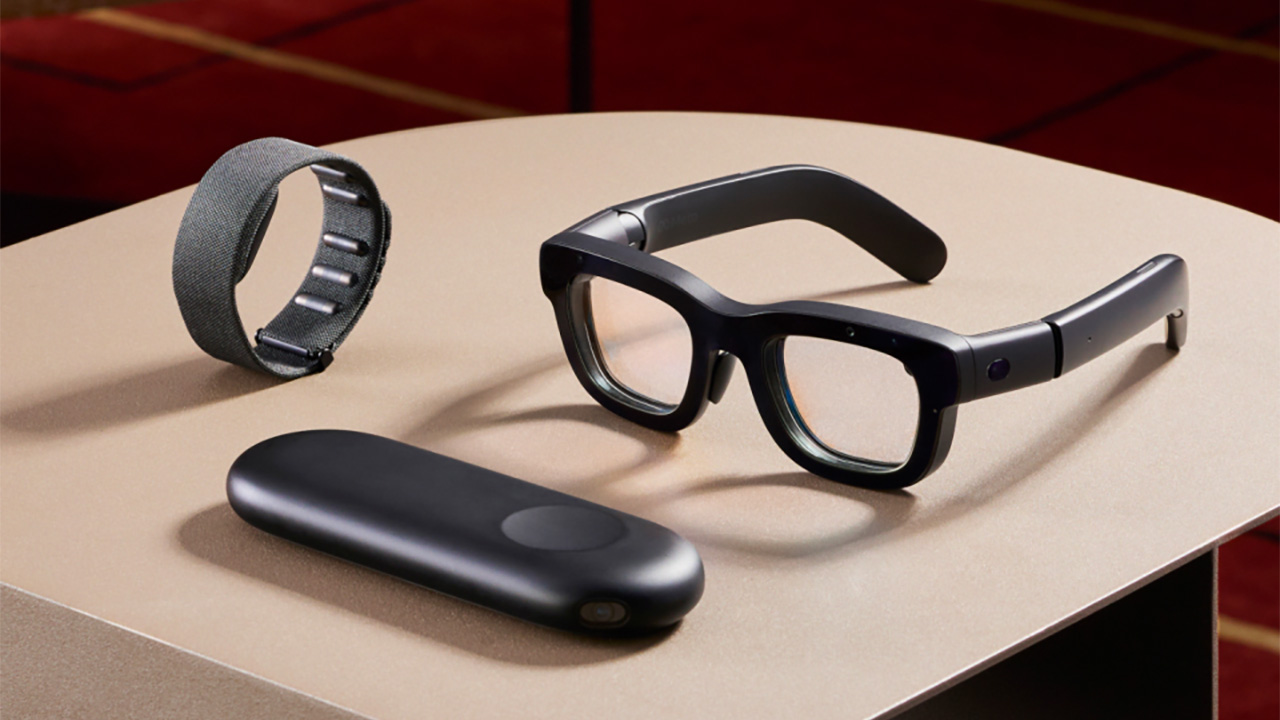 The next big tech battlefield is AR Glasses – and Apple is ready to fight
The next big tech battlefield is AR Glasses – and Apple is ready to fightTim Cook is said to "care about nothing else"
By Sam Cross Published